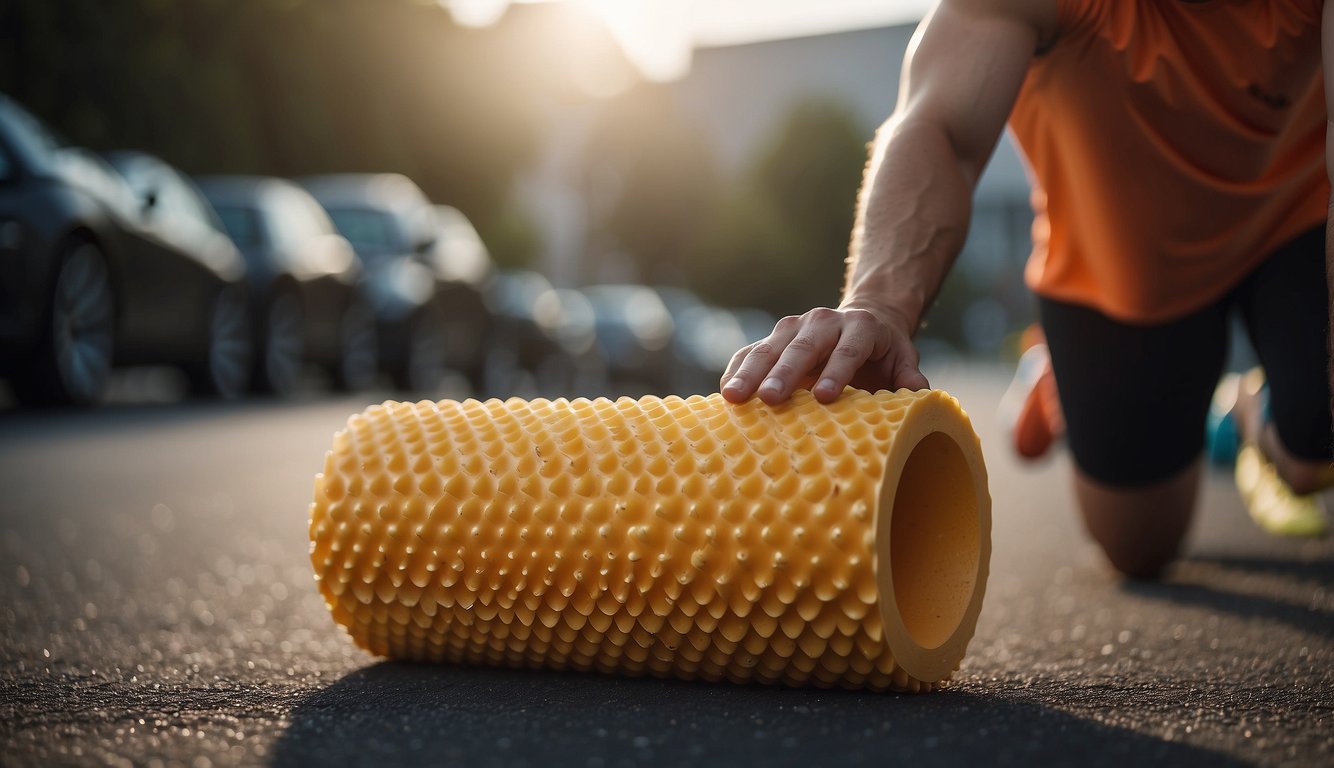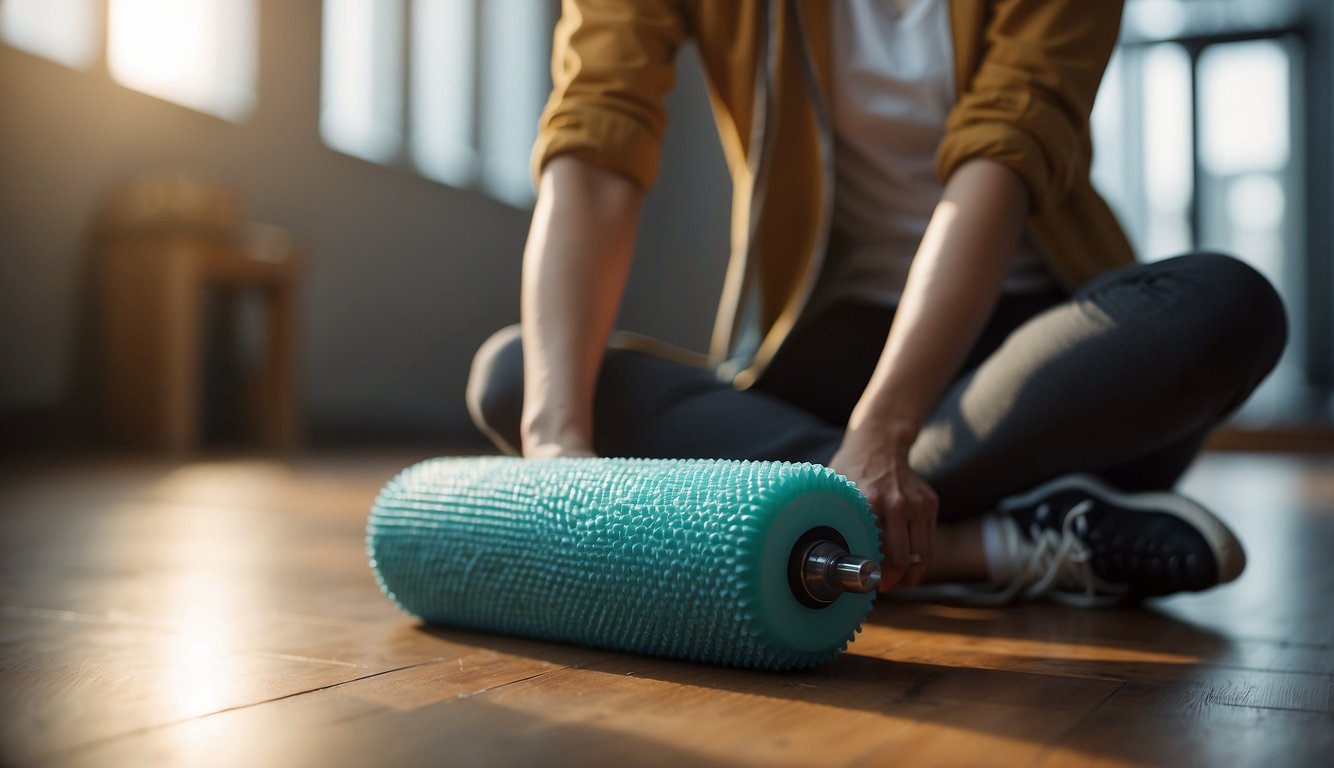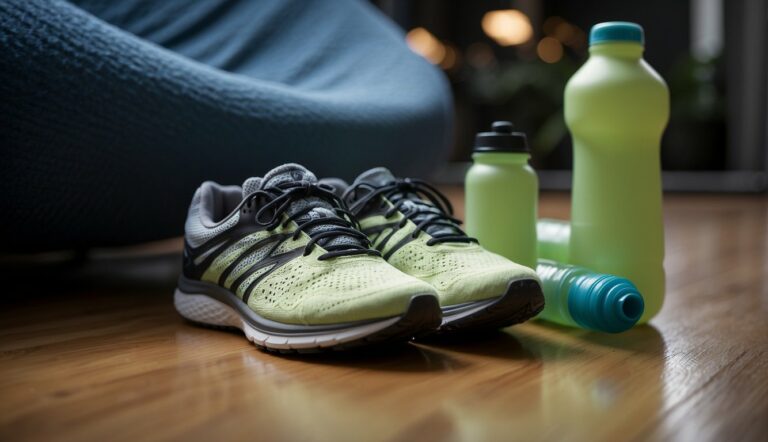Should You Use a Foam Roller in Your Running Warm-Up Routine?
Incorporating a foam roller into your running warm-up routine can significantly enhance your performance and prevent injuries.
As a runner, you understand the importance of a proper warm-up to prepare your muscles for the exertion ahead. Foam rolling, a form of self-myofascial release, targets the fascia—connective tissue surrounding your muscles—easing tightness and increasing blood flow.
This technique not only readies your muscles by breaking up knots but also improves your range of motion.
By doing so, you’re warming up the muscles effectively and ensuring your body is more supple and less prone to the strains of running. Regular foam rolling before your runs might reduce soreness and enhance recovery, contributing to a more consistent training regimen.
Start by focusing on key areas that runners often find tight such as calves, hamstrings, quadriceps, and glutes. Spending a few minutes on each area can help release tension and promote muscle health. Always remember to roll slowly and pause on tender spots—this deliberate approach can facilitate better results in your warm-up and overall health.
Should Runners Use Foam Rollers To Warm Up?
Integrating foam rolling into your warm-up routine may enhance your running performance by improving flexibility and reducing muscle tightness.
Benefits and Functions
Foam rolling, also known as self-myofascial release, offers several key benefits for runners:
- Increases mobility and range of motion: Regular use can lead to improved joint mobility, which is essential for a longer, more efficient running stride.
- Enhances blood flow: By rolling over various muscle groups, you promote increased blood circulation to the tissues, which can aid in the warm-up process.
- Reduces muscle soreness: Foam rolling may alleviate the severity of delayed onset muscle soreness (DOMS) after intense workouts.
- Target soft tissue and muscular imbalances: By working on specific areas, you can address trigger points and adhesions that contribute to muscular imbalances.

Mechanism of Action
The primary mechanism behind foam rolling lies in its ability to apply pressure to your fascia, the connective tissue surrounding muscles.
This pressure can help to:
- Ease adhesions or “knots”: Foam rolling helps to break down fascial adhesions, which can restrict movement and cause pain.
- Support muscle recovery: The pressure from the roller mimics the hands of a massage therapist, encouraging recovery and reducing soft tissue tension.
Types of Foam Rollers
Various types of foam rollers with differing densities and textures offer unique benefits. Here’s a brief overview:
| Type of Roller | Best For |
|---|---|
| Soft | Beginners, muscle relaxation |
| Medium | General use, day-to-day maintenance |
| Firm | Deep tissue work, breaking up tight knots |
Smooth rollers are great for general use, while textured rollers target deeper tissue layers and are effective at pinpointing trigger points. Choose one based on your comfort level and the specific benefits you seek.
Proper Warm-Up Techniques for Runners
Proper warm-up techniques can enhance your performance and reduce the risk of injury. Starting with dynamic activities primes your muscles and joints for the run ahead, and incorporating elements like foam rolling can address muscle stiffness.
Dynamic Stretching and Mobility
Before you run, focus on dynamic stretching to improve flexibility and mobility. Moves such as leg swings and lunges target your hamstrings, quadriceps, glutes, and hips. These exercises enable your joints to move through their full range of motion, preparing them for the impact of running.
Key Dynamic Stretches:
- Leg swings (forward and side-to-side)
- Lunges (forward, side, and rotational)
- High knees
- Butt kicks
- Arm circles
Foam Rolling in Warm-Up Routines
Foam rolling, a form of self-myofascial release, can effectively reduce muscle tightness before a run. Using a foam roller or a tennis ball for targeted areas, apply gentle pressure to each muscle group for about 30 seconds. Focus on your lower body, where tightness is common among runners.

Target Areas for Foam Rolling:
- Calves
- Hamstrings
- Quadriceps
- Glutes
- IT band
Incorporating Other Warm-Up Elements
Apart from dynamic stretching and foam rolling, a complete warm-up should include elements that increase your heart rate. A brisk walk or a light jog can help with this. Consult with a physical therapist to create a stretching routine tailored to your needs if you have specific concerns.
Warm-Up Routine Overview:
- Begin with a 5-minute brisk walk or light jog.
- Move into dynamic stretching focusing on lower body muscles.
- Spend 5 minutes foam rolling key muscle groups.
- Complete any additional exercises recommended by your physical therapist.
Foam Rolling for Recovery

Incorporating foam rolling into your post-run routine can enhance recovery by alleviating muscle tightness and soreness. This practice is crucial for maintaining running performance and reducing recovery time.
Post-Workout Recovery Strategies
After a run, your muscles can benefit from foam rolling as a recovery tool. Applying pressure to muscle groups like your calves, back, and the iliotibial (IT) band can massage out tightness and improve blood flow. Here’s how to use foam rolling effectively:
- Calves: Sit on the floor, place the roller under one calf, and roll from the knee to the ankle.
- Back: Lie on the roller and gently roll up and down from your lower to upper back.
- IT Band: Lie on your side with the roller beneath your hip and move along your outer thigh.
It’s crucial to hydrate and consider proper nutrition as part of your recovery strategy. Combining hydration, nutrition, and foam rolling can help reduce discomfort and prepare your body for the next workout.
Addressing Delayed Onset Muscle Soreness
Experiencing stiffness or discomfort 24-72 hours post-workout, known as Delayed Onset Muscle Soreness (DOMS), is common for runners. Proper cooldown and using a foam roller can help mitigate symptoms:
- Apply consistent pressure to affected muscles for up to two minutes.
- Focus on areas prone to soreness, such as your piriformis and other central muscle groups.
Regular foam rolling can improve circulation and help your central nervous system by stimulating a calmer state, which might aid in quicker recovery from DOMS. For beginners, start with light pressure and gradually increase as your tolerance builds. Remember, recovery from soreness is as critical as the warmup for injury prevention and maintaining a healthy running routine.






